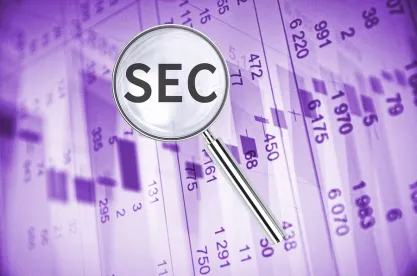On March 20, 2019, the US Securities and Exchange Commission (SEC) adopted amendments that simplify and update certain disclosure requirements intended to improve the readability and navigability of disclosure documents and discourage repetition and disclosure of immaterial information. The amendments illustrate the SEC’s continued efforts to implement its mandate under the Fixing America’s Surface Transportation (FAST) Act, which requires the SEC to identify disclosure requirements that are redundant, outdated or excessive in that they require the disclosure of immaterial information. The amendments were first proposed in October 2017 and they follow on the heels of the adoption last year of the Disclosure Update and Simplification Amendments.
While last year’s amendments seemed to focus on redundant requirements that appear both in US GAAP and SEC disclosure rules, the amendments in the adopting release, and discussed below, appear to shift the administration of the SEC’s disclosure regime away from outdated filing requirements and toward modern technologies that offer improved search functionalities.
The amendments relating to the redaction of confidential information in material agreements filed as exhibits are effective April 2, 2019. All other amendments are effective May 2, 2019.
Confidential Treatment Request Not Required for Certain Omissions
The SEC adopted amendments to Item 601(b)(10) of Regulation S-K, which requires companies to attach material agreements entered into within the last two years as exhibits to an applicable filing document. The amendments allow companies to omit certain confidential information contained in such agreements, provided that the omitted information is not material and that it would likely cause competitive harm if publicly disclosed. The amendments also permit companies to omit schedules, exhibits or other attachments to their material agreements if such attachments do not contain material information and the information therein was not otherwise disclosed.
Prior to the amendment, companies were required to follow strict procedures for obtaining confidential treatment of such information included in exhibits filed under the Exchange Act and Securities Act. Under these procedures, outlined in Exchange Act Rule 24b-2 and Securities Act Rule 406, companies were required to submit a detailed application (CTR) identifying the specific text for which confidential treatment is sought, the applicable exemption and the legal requirements thereunder, and an explanation of why, under the circumstances, disclosure of the information is unnecessary for the protection of investors.
Companies are still required to comply with other requirements of the rule as amended, including marking the exhibit index to indicate that information has been omitted from a particular exhibit, prominently displaying a legend on the first page of the exhibit to indicate that information has been omitted and indicating with brackets sections in the exhibit where information has been omitted. Further, companies are still limited to redacting no more information than necessary to prevent competitive harm.
Upon review by the SEC staff and a formal request, companies are expected to promptly provide as supplemental materials to the staff the unredacted copies of the material agreements and legal reasoning for the confidential treatment in a manner that is similar to what was previously required in a CTR. The SEC staff may also request information similar to the detailed information previously required under the CTR.
In addition to the amendments related to confidential treatment, the SEC also amended Item 601(b)(10)(i) of Regulation S-K by limiting the scope of companies subject to the requirement to file material contracts that were entered into within two years of the applicable registration statement or report. This requirement will only apply to newly reporting registrants. The SEC notes in their adopting release that reporting companies will still be required to file material contracts that are performed in whole or in part at or after the filing of the registration statement or report.
Three-Year Lookback in MD&A Disclosure May Be Omitted
The SEC adopted amendments to Item 303 of Regulation S-K, covering the Management’s Discussion and Analysis of Financial Position and Results of Operations (MD&A), that allow companies to omit discussion of the earliest of the three years covered by their financial statements, provided that such discussion was included in a prior filing with the SEC and the company references the location of the omitted information within the prior filing. Item 303(a) of Regulation S-K generally requires companies to disclose their financial condition, changes in financial condition, and results of operations. Before the amendments, the MD&A disclosure, subject to certain exceptions, was to address the three-year period that is covered in the company’s financial statements provided with the filing.
In its adopting release, the SEC emphasized that the amendment permitting the omission of discussion of the financials of the earliest year does not relieve management from identifying material trends in the company’s business, which may extend back to that year or earlier periods. Instead, the goal of this amendment is to discourage repetition of information that was previously included in an SEC filing and that is no longer material. Therefore, references to material elements of the prior year’s financials should be included in subsequent disclosures, while reiterations of the entirety of the prior year’s discussion and analysis are not required. Similar amendments were adopted regarding the disclosure requirements under Item 5 of Form 20-F used by foreign private issuers.
The amendment also removes the instruction that information should be presented in a year-by-year format, and replaces this instruction with a statement that the presentation may take any form that, in the company’s judgment, “enhances a reader’s understanding” of the company’s financial condition, changes in financial condition and results of operations.
Description of Registered Securities as an Exhibit to Form 10-K
The SEC adopted amendments to Item 601(b)(4) of Regulation S-K requiring companies to attach as an exhibit a description of the class, characteristics and rights of the company securities that have been registered under the Exchange Act. Prior to the amendments, companies were required to attach instruments—such as forms of specimen stock certificates, indentures or certificates of designation—that defined the rights these securities. The amendments would require companies to summarize the material terms of these securities in one exhibit. The goal of the amendment is to facilitate access to such information rather than requiring investors to piece together the information themselves. The amendments do not affect other disclosure requirements, such as filing updated articles of amendment and bylaws, or filing a current report on Form 8-K to disclose modifications to the rights under company securities.
Delinquent Section 16 Filing Disclosure
The SEC adopted amendments to Item 405 of Regulation S-K, covering the disclosure of directors, executive officers and other persons required to file reports disclosing their beneficial ownership of company equity securities under Section 16 of the Exchange Act, but who fail to file such reports in a timely manner. The SEC adopted amendments changing the disclosure heading required under Item 405 to “Delinquent Section 16(a) Reports.” The amendments encourage companies to exclude this section if there are no delinquent filings to report. Further, the amendments eliminate the requirement that persons reporting under Section 16 furnish a duplicate of their Section 16 report to the company. After the amendments, companies are permitted to rely solely on the reports electronically filed on EDGAR.
Form Cover Pages
The amendments also revise the cover pages of Forms 10-K, 10-Q and 8-K. Form 10-Q and Form 8-K to include disclosure of the national stock exchange or principal US market for the company’s registered securities. The amendments also revise the cover page of Form 10-K by requiring disclosure of the trading symbol for the company’s securities, if listed on an exchange, and by removing a checkbox that would indicate whether during the most recent fiscal year any person filing reports under Section 16 of the Exchange Act was delinquent in filing such reports.
Inline XBRL
The SEC’s adoption release further amended the requirements for a public company to tag data on the cover page to its EDGAR filings using Inline XBRL. The SEC aligned the phase-in periods for adoption of Inline XBRL in cover pages with the phase-in periods for adoption of Inline XBRL in operating company financial statement information, which the SEC adopted in 2018.
Both requirements are phased-in based upon the company’s filer status as follows:

In both adopting releases, the SEC clarifies that companies that are domestic filers will be required to comply with Inline XBRL requirements beginning with their first Form 10-Q (not the first form) for a fiscal period ending on or after the applicable compliance date. For example, a company with a calendar fiscal year end that files a Form 10-Q for the period ending June 30, 2019, must tag data on the cover page and within the financial statement information included therein in Inline XBRL. A domestic company with a June 30 fiscal year end will be required to tag cover page and financial statement information starting in its Form 10-Q for the period ending September 30, 2019.
Other Amendments
Other notable amendments include limiting the requirements of Item 102 of Regulation S-K to the disclosure of physical property only to the extent that it is material to the registrant and removing the requirement to file as an exhibit any document or part thereof that is incorporated by reference in a filing, and requiring that companies provide hyperlinks to documents incorporated by reference.






 />i
/>i
